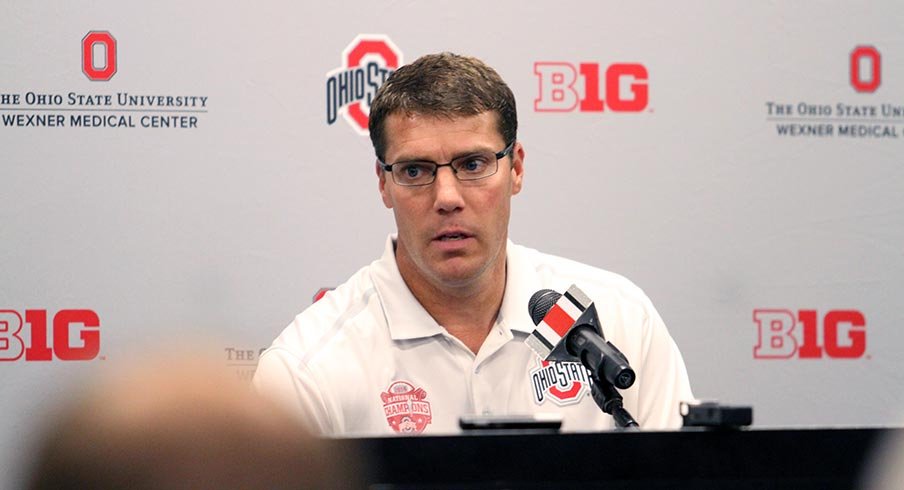In the spring of 2012, Ohio State was on the recruiting trail and on the prowl for a bell-cow running back. The Buckeyes were searching for the centerpiece of Urban Meyer and Tom Herman's future offenses and there was an obvious choice to be that player, at least according to a number recruiting experts and fans: Derrick Green, from Richmond, Va.

Green, as you can see above and are no doubt aware, was the country's top-ranked running back and a player who verbally expressed his affection for and desire to attend Ohio State. Although he's now at Michigan, still wears No. 27 in homage to 1995 Heisman winner Eddie George. So why did the Buckeyes pass up this five-star who was almost a sure bet to commit to Ohio State, especially coming out of the same high school 2011 five-star Curtis Grant attended?
"We have to make sure we do a great job of identifying the guys that can actually play winning, high-level football here and not just take guys because they put their hand up and want to come to Ohio State," Chris Ash, the Buckeyes' defensive coordinator said Monday afternoon. "We have to take the right guys. Because we all know there are a lot of guys out there that probably would say, 'Yes, I want to go to Ohio State' if we offer them, and we have to make sure we're offering and taking the right players that can compete and win at a high level."
That's not to say that Green couldn't have performed at Ohio State, but rather to underscore the choice the Buckeyes made, chasing Missouri legacy Ezekiel Elliott, was the right one. Elliott was no slouch (ranked as the country's 12th-best running back in that cycle), but it was his overall game, pass-catching ability and aggressiveness as a pass-blocker that made him the better fit for the Buckeyes, despite not being ranked "as high" as Green. Ash talked a bit more about that principal, translating it to the defensive side of the ball, during Monday's press conference.
"The challenge that we have right now from a recruiting standpoint defensively, especially in the secondary is we're looking for very specific skill sets to do the job that we ask them to do," Ash continued. "We're not just looking for, for example, a big 6-foot-3, 210-pound safety. That doesn't fit the job description of what we need our guys to be able to do. We're looking for guys with coverage ability, (who are) good tacklers, (with) football intelligence; like a Vonn Bell is right now. Those are the type of players we're looking for."
For Ash's secondary, it's a breakdown like that which could help the average recruiting fan figure out why the Buckeyes covet a player like Damar Hamlin, Jordan Fuller, or Jaylon Jones while not aggressively pursuing higher-ranked players who were – at one point or another – very interested in Ohio State like Jared Mayden, Lavert Hill and others. It's not just about the stars, but the fit and the evaluation done by the Buckeye coaches.
Ash, like most in his profession, has been on coaching staffs where they didn't have ability to be so particular. He says being at a place like Ohio State means there is a focus on finding the right guy, not just a guy.
"At times you've just got to find guys. If you're in a program, a lower-level program and you're not winning, you might not be very attractive to recruits and you got to find guys to fill a roster. I've been there. I know how challenging that is," Ash said. "To get those guys, you have to sort through a lot of people, and it's a lot of film evaluation, (a) lot of follow-up, (a) lot of phone calls, lot more than we probably have to do here at Ohio State. It's a completely different recruiting approach because of where you're at."
When you're at the helm of a college football program like Ohio State, there's no reaching. There are no pity offers. There are no freak-outs about missing on Player A just because he's got five-stars or whatever; this is a program with an unmistakable sense of its own identity and extreme confidence in where it's heading.


